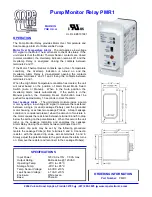
Table. 5.5.8. - 214. Measurement values reported by mA output card
Name
Range
Step
Description
mA In Channel 1
0.0000…
24.0000mA
0.0001
mA
Measured mA value of the input channel.
mA In Channel 2
mA Out Channel Input
Magnitude now
-10
7
…10
7
0.001
Value of the selected measurement value at the moment for the
output channel control.
mA Out Channel Outputs
now
0.0000…
24.0000mA
0.0001mA Current output value of the mA output channel at the moment.
Milliamp input
Up to two independent milliamp option cards are supported. Each card has 4 milliamp -outputs and
one mA -input. If the IED has milliamp option card, enable mA-input by selecting:
Measurements
→
AI(mA, DI volt) scaling
:
Figure. 5.5.8. - 159. Each milliamp option card (order code “I”) has one mA-input channel. Activate analogue input and create a
scaling curve.
Table. 5.5.8. - 215. Main settings of the mA inputs
Name
Range
Default
Description
Analog-input scaling
0:Disabled
1:Activated
0:Disabled
Enables mA input.
Scaling curve 1...4
0:Disabled
1:Activated
0:Disabled
Enables scaling curve and mA input measurement.
Curve1...4 input signal
select
0:RTD S1
resistance
…
15:RTD S16
resistance
16:mA In 1 (I card
1)
17:mA In 2 (I card
2)
0:RTD S1
resistance
De nes the category of measurement used for mA input
control.
Input signal lter calculates an average for received mA signal according to set time constant.
Therefore, rapid changes and disturbances like fast spikes are smothered. The Nyquist rate states that
the lter time constant must be at least double the period time of the disturbance process signal. For
example, a value for the lter time constant is 2 seconds for a 1 second period time of a disturbance
oscillation.
AQ-F255
Instruction manual
Version: 2.00
263
© Arcteq Relays Ltd
















































